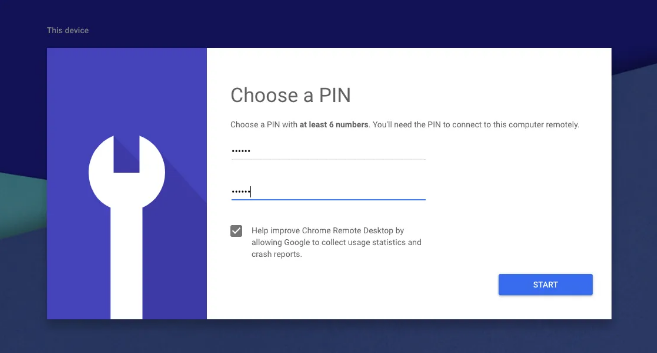

- Chrome remote desktop client how to#
- Chrome remote desktop client install#
- Chrome remote desktop client update#
- Chrome remote desktop client android#
- Chrome remote desktop client software#

Chrome remote desktop client install#
To install xRDP on Debian 10/11 run the following command: sudo apt -y install xrdp
Chrome remote desktop client update#
Update package index: sudo apt update Step 1 – Install xRDP on Debian 10/11 That makes your system vulnerable to outside and inside threats. We do not recommend logging in as a root user because when you’re logged in as a root user, all your applications are running with root privileges. Being a sudo user gives you to have administrative privileges without having to log in as a root user.
Chrome remote desktop client software#
Authentication is required to set the network proxy used for downloading software Authentication is required to create a color-managed device Authentication is required to refresh the system repositories
Chrome remote desktop client how to#
This tutorial explains how to install xRDP on a remote machine running Debian 10 or Debian 11, how to install multiple desktop environments on the remote machine, how to connect to it from different operating systems, how to fix a few common issues, and a few optimizations you can make to possibly improve a laggy connection. It works by bridging graphics from an X Windows system (Unix-like OS) to the client (the one receiving commands) and relaying controls back from the client to X. xRDP allows RDP clients to present an X Windows desktop to the user. The xRDP server is full-screen and doesn’t require any special client-side software to be installed. XRDP allows non-Microsoft operating systems such as Linux and BSD to provide a fully-functional RDP-compliant remote desktop environment.
Chrome remote desktop client android#
You also control the remote machine from operating systems that support RDP, which includes Windows, Mac, Linux, Android and iOS. With RDP you can connect to a another computer over a network and control it through its graphical user interface, and use it almost as if you were sitting right in front of it. They need to make sure that the operating systems and servers they use can support USB redirector functionality.XRDP is a free and open-source implementation of Windows Remote Desktop Protocol (RDP), that started in 2004. Another factor that is important for network administrators is keeping their VDI software updated.With a LAN, the network latency rate can be less than 20 milliseconds, which is rarely possible to achieve with a wide area network. Local area networks (LANs) which are widely used by employees on-premises often work better with RDP USB redirection.Unfortunately, at times WANs can offer not enough throughput, which means limited access to the functionality of local devices accessed from a virtual desktop. Wide area networks (WANs) can be used to pass through USB to the remote desktop and are especially useful for those workers who have to often change their location.Latency, bandwidth, and sporadic reliability can all negatively impact the network’s ability to provide a quality user experience when redirecting USB to a remote desktop.IT team needs to ensure that the network used for USB forwarding to the remote desktop will handle the requirements of the device that’s going to be shared.Many factors should be taken into account before trying to redirect USB to a remote desktop: When it comes to using local USB devices on a remote desktop within small companies and big enterprises, system administrators should always keep track of networks used by employees and devices they try to redirect to a virtual environment. For example, your Windows PC can easily connect to a USB device from Mac or the other way around.Ĭhallenge of USB redirection to Remote Desktop USB to Remote Desktop software hosts versions for Windows, Linux, and Mac, so any server-client combination is possible. Note: Starting from version 7.x, USB Network Gate supports the ICA protocol, which means you can forward devices from a thin client to the terminal server over ICA. So, once you create a connection to a shared peripheral, the device shows up in the Device Manager of the RDP Server and all applications installed on that machine recognize the peripheral as though it were attached locally.
:max_bytes(150000):strip_icc()/chrome-remote-desktop-share-de6ddea9bf584bd0a53c59f5148a4b4f.png)
You can install the app and use the Client module on an unlimited number of remote machines and connect to shared devices for free. As for the Client part, it doesn’t need to be registered. After that, you will be able to forward the USB device to the remote desktop. You need to activate the software for using it on the server computer (UNG Server). It’s worth noting that USB Network Gate requires activation.


 0 kommentar(er)
0 kommentar(er)
